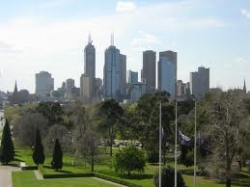resource library
ArrayGlobal climate-driven trade-offs between the water retention and cooling benefits of urban greening

26/01/2022
This paper suggests urban greening can’t reduce both flooding and heat in many, if not most, of the world’s cities, parts of southeast Australia are among the rare exceptions. This includes parts of Melbourne and Hobart.
Melbourne, for example, can endure urban heat island-induced temperature increases of 3℃. City greening initiatives are an important way to mitigate this heat.
On the other hand, Canberra, Adelaide, Perth and Brisbane are “water-limited”, which means urban greening is ineffective at reducing the urban heat island effect. However, because much of Australia has a relatively dry climate which is good for water retention, large-scale urban greening initiatives can help reduce flash flooding in these cities.
For example, Brisbane has lots of sunshine in summer, providing ample energy for evaporation, which often exceeds the amount of available summer rains.
Via this link you can read a full opinion piece on this article from UNSW newroom titled Why urban greening is not a panacea for extreme weather under climate change
